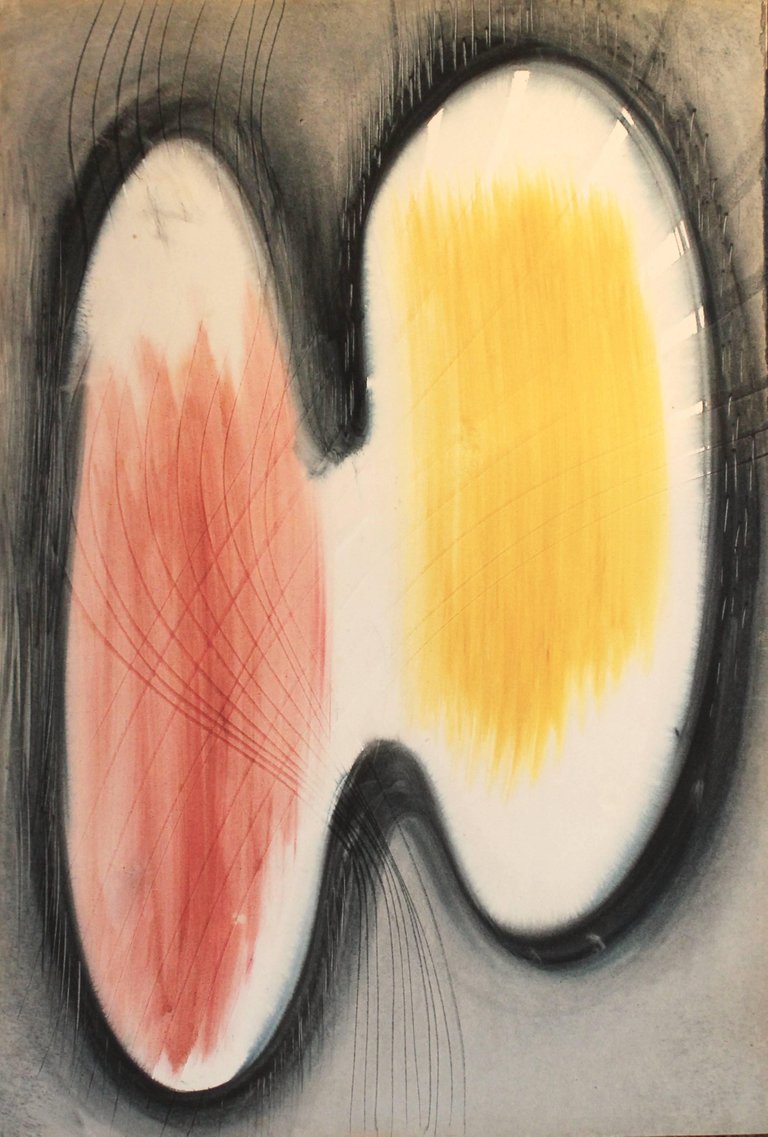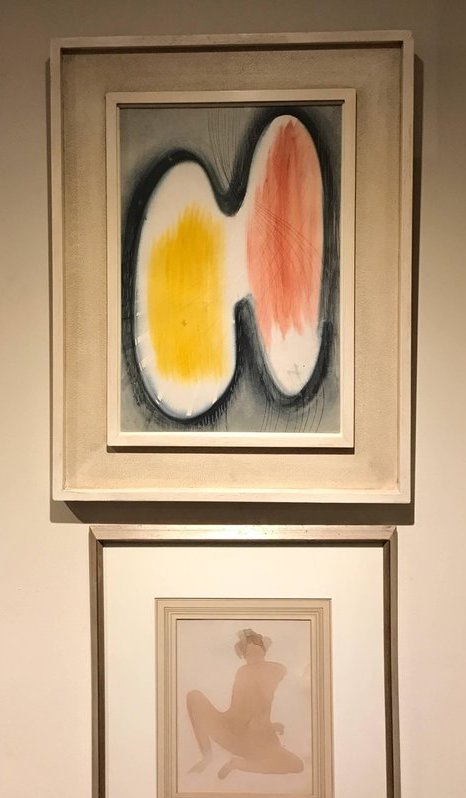John TUNNARD (1900-1971)
Fusion
mixed media on paper
titled, with artist’s studio stamp verso
23 x 15 in / 58.5 x 38 cm (sheet)
30 1/4 x 23 1/4 inches, inc. frame
John Tunnard’s reputation was first made in the late 1930s when, as one of a small group of pioneering British artists, he began to explore the frontiers of surrealism. By 1939, he was exhibiting widely in London, including at Peggy Guggenheim’s surrealist-inspired gallery Guggenheim Jeune, and by the late 1940s he was involved in contemporary British art shows in New York and Paris. Later, he was one of the artists invited to create murals for the Festival of Britain in 1951.
Tunnard settled in Cornwall, near the south tip of the Lizard, and was an outlying member of the St Ives Group, which did so much in the mid-20th century to develop a new British abstraction, with profound effects on the growth of modern art in this country.
Although Tunnard’s name is seldom at the top of the list of British art heroes from this high point of modernism, he is increasingly acknowledged as one of the most accomplished artists of this school, not least in his extraordinary technical refinement. In the late 1960s and ‘70s, far from standing still as some of his contemporaries did, he took daring forays into abstraction, keeping pace with a newer generation of painters who were leaving landscape-derived abstraction behind, and turning towards space-age concepts, and the depiction of atomic or amoebic forms.
‘Fusion’ belongs to this rich period of innovation. It is a work partially rooted in British modernist traditions while displaying a futurist’s taste the incandescent and the organic. Rare in Tunnard’s oeuvre, these late paintings evoke a moment and mood in British post-war art - half-fearful, half-optimistic - that is now being considered an important strand in the cultural story.



